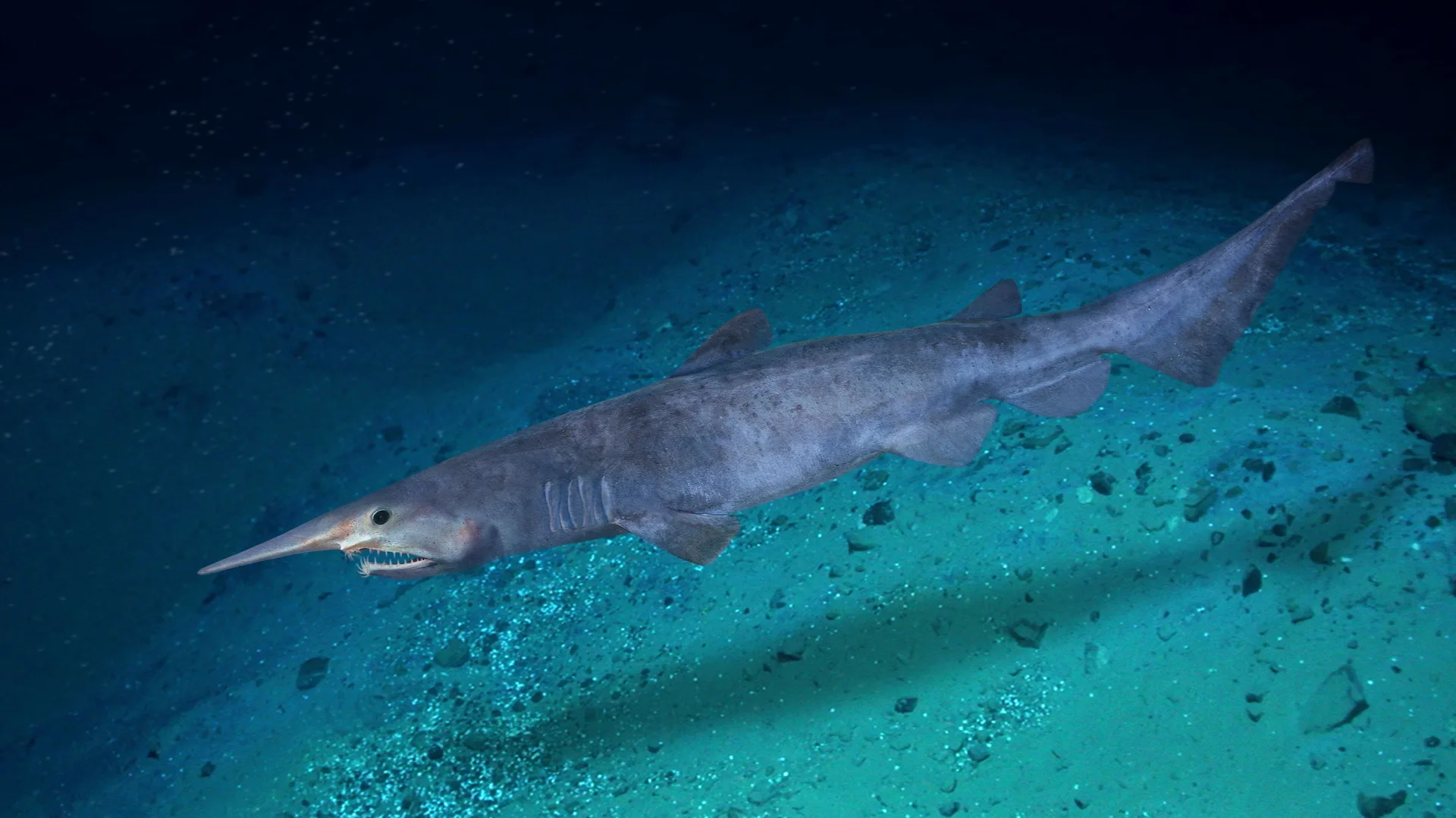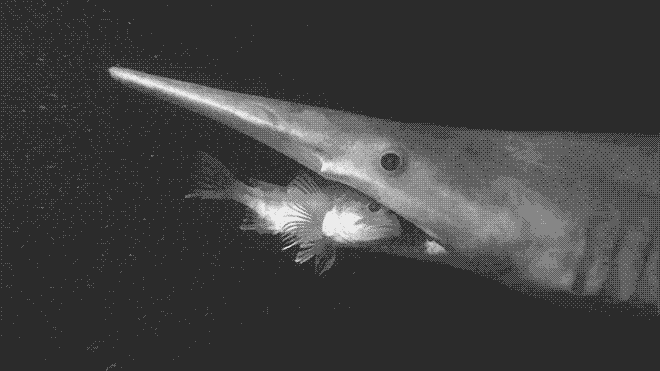All About Goblin Sharks
My new best friend is a goblin shark, but I can’t find them anywhere

Swimming in some of the deepest waters of the ocean is the gorgeous goblin shark. This misunderstood bottom-dweller is often demonized—called creepy, disgusting and gross. But you’ll find none of that here. This blog is an “ode to the goblin shark.” Imagine having what it takes to survive at ocean depths of 3,000 feet or more and living on this planet for about 125 million years!
And so it begins… an ode to goblin sharks. Dive in and learn more.
Goblin Sharks
Mitsukurina owstoni
Information about goblin sharks is sparse, and photos of the species are extremely rare. Encounters with humans, through observation or accidental catch, are limited.
Get Ocean Updates in Your Inbox
Sign up with your email and never miss an update.
Habitat and Size
Where do goblin sharks live? Their habitat is in the benthopelagic zone—living and feeding near the bottom of the ocean. They have been known to dive down to depths ranging between 800 and 3,000 feet. Goblin sharks live in the Atlantic, Pacific and Indian oceans—usually in the upper continental slope. Scientists have recorded goblin sharks around Brazil, France, Portugal, the Gulf of Mexico, Japan, Australia and more.
The size of goblins sharks varies, and the true maximum size of the species is still unknown. It’s believed that goblin sharks grow to between nine and 20 feet long. The size at birth is not known.
Not on the Menu
Do people eat goblin sharks? No.
Physical Appearance
What color is the goblin shark? Goblin sharks have semi-translucent skin, which means that their blood vessels can be seen through their skin. That’s why the goblin shark may look different colors in different photos. They can appear a pale white, grey or pink in color.
The goblin sharks’ most charming feature is their long, pointy snout and their remarkable jaw. The goblin shark can launch its entire jaw forward and thus expanding the length of its deadly bite. Its jaw acts like a rubber band, catapulting forward, grabbing prey and retracting back. The jaw speed is unmatched by any other animal on Earth.
The mouth of the goblin shark is full of long lines of pointed, sharp teeth. These allow them to grip onto the fish and squid that they eat. As a deep-sea dweller, goblin sharks have poorly developed muscles and eyes. They also have very small fins and a weak skeleton.
But goblin sharks have been swimming in the ocean for about 125 million years. They have adapted to the dark, cold depths of the ocean and have survived by slowly, silently approaching their prey and using their quick jaw to grab their food.
Did You Know?
The name “goblin shark” comes from the Japanese translation of “tenguzame.” “Tengu” references a mythical creature with a long nose and a red face.
Slow Swimmers
As with another famous deep-water shark, the Greenland shark, the goblin shark takes an easy-going approach to life and is a very slow swimmer. Since high-energy food is hard to come by in the deep ocean, deep-water sharks do all they can to conserve their energy and not waste it by needlessly swimming fast.
How Do Goblin Sharks See?
First, goblin sharks have eyes that can see, but their eyes aren’t that useful in the darkness of the deep sea. Not to worry, goblin sharks can “see” or locate their prey by using electroreceptors in the noses. Their snout is full of tiny electroreceptors called ampullae of Lorenzini. While all sharks have ampullae of Lorenzini, goblin sharks have a very high density of them on their noses. These electroreceptors help the goblin detect, with extreme accuracy, the tiniest of heartbeats from other animals living in the deep sea.
Diet and Reproduction

Using the electroreceptors in the nose, swimming ever-so-slowly and then retracting their lighting fast jaw… the goblins shark preys on bony fishes, crustaceans and cephalopods, like squid. There is still so much we don’t know about how they reproduce—scientists have yet to capture or study a pregnant female. Most of the specimens observed have been subadults, meaning they haven’t yet reached reproductive maturity.
Goblin sharks are not considered dangerous to humans.
Age and Population Status
Some researchers have estimated that goblin sharks can live up to 60 years.
Although goblin sharks are rare, they’ve been categorized by the IUCN as “Least Concern,” meaning that they are not at threat of extinction. They are widely distributed and rarely seen by humans—their population numbers remain stable.
How You Can Help Goblin Sharks
It’s up to all of us to help protect goblin sharks, the deep sea and all the animals living in the ocean. Ocean Conservancy is working with you to protect the ocean from today’s greatest global challenges. Together, we create evidence-based solutions for a healthy ocean and the wildlife and communities that depend on it.
Please make a donation to Ocean Conservancy—give today and make a difference for the future of our ocean!